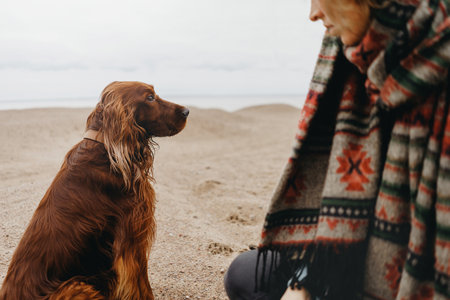Why Swimming is Great for Dogs
Swimming isn’t just a fun activity for dogs—it’s also packed with health benefits that can help your pup thrive. Whether you have a young, energetic retriever or an older dog with joint issues, swimming can make a big difference in their well-being. Here’s why:
Physical Benefits of Swimming for Dogs
When dogs swim, their bodies get a full workout without putting stress on their joints. This is especially helpful for dogs who suffer from arthritis or hip dysplasia. The buoyancy of water supports their weight and allows them to move freely, which can ease pain and improve mobility.
| Benefit | How It Helps | Example |
|---|---|---|
| Joint Relief | Takes pressure off joints and bones | An older Labrador with arthritis can swim comfortably when walking becomes painful |
| Weight Management | Burns calories and builds muscle | A chubby Beagle can lose weight through regular swimming sessions |
| Cardiovascular Health | Strengthens the heart and lungs | An active Border Collie can boost endurance by swimming laps at the lake |
Mental Benefits of Swimming for Dogs
Swimming isn’t just good for your dog’s body—it’s great for their mind too. Water play can reduce stress and boredom, especially for dogs who get anxious or have lots of pent-up energy. Many pet owners notice their dogs seem calmer and happier after a swim.
| Mental Benefit | Description | Example |
|---|---|---|
| Stress Reduction | The soothing sensation of water helps dogs relax | A nervous rescue dog feels less anxious after splashing around in the pool |
| Mental Stimulation | New environments and activities keep dogs engaged and curious | A city-dwelling Poodle enjoys exploring new smells and sights at the local dog beach |
| Socialization Opportunities | Swimming areas often provide chances to meet other dogs and people | A friendly Golden Retriever makes new friends at a community pool day for pets |
Real-Life Example: Arthritis Relief Through Swimming
Maggie, a 10-year-old German Shepherd, struggled to climb stairs because of severe arthritis. Her veterinarian recommended weekly swimming sessions at a local canine rehab center. After just one month, Maggie showed improved flexibility and was able to go on longer walks without limping.
Key Takeaway:
If you want to help your dog stay healthy—physically and mentally—consider adding swimming to their routine. It’s a safe, low-impact way to support their overall quality of life.
2. How to Get Your Dog Comfortable in the Water
Start Slow and Build Trust
The first step to introducing your dog to swimming is taking it slow. Every dog is different—some may be natural water lovers, while others need time to warm up. Start by letting your dog explore shallow water, like the edge of a calm lake or a kiddie pool. Use lots of praise and treats to create positive associations.
Step-by-Step Introduction Process
| Step | What to Do | Behavior Tip |
|---|---|---|
| 1. Let Them Observe | Allow your dog to watch you or other dogs in the water without pressure. | If your dog seems anxious, stay calm and avoid forcing them closer. |
| 2. Get Their Paws Wet | Encourage your dog to step into very shallow water using treats or toys. | Celebrate small wins, like just touching the water with a paw. |
| 3. Gradually Increase Depth | Lead your dog a little deeper as their confidence grows. | If they hesitate, back up and try again later—patience is key. |
| 4. Support Their First Swims | Hold your dogs belly gently as they paddle for the first time. | Use a calm, reassuring voice and stay close at all times. |
| 5. Make It Fun! | Toss floating toys or play gentle games in the water together. | End sessions before your dog gets tired or overwhelmed. |
Anecdote: Building Confidence Together
Maggie, a golden retriever from Ohio, was hesitant about water at first. Her owner started by sitting near the backyard kiddie pool and tossing in her favorite squeaky toy. Over several sessions, Maggie began dipping her paws in and eventually started paddling around with excitement. This gradual approach helped Maggie associate water with fun, not fear—a great example of how patience pays off!
Quick Tips for Success
- Stay Positive: Always use upbeat tones and lots of praise.
- Go at Their Pace: Never force your dog; let them set the tempo.
- Bring a Friend: If possible, let your dog watch another confident swimmer—it can help them feel safer.
- Use Safety Gear: For new swimmers, a well-fitting canine life jacket adds confidence and security.
- Create Routines: Consistent practice helps reinforce comfort around water.
![]()
3. Popular Dog-Friendly Swimming Locations in the U.S.
Looking for the perfect spot to let your dog splash around? Across America, there are many beaches, lakes, and pools where dogs are not just allowed—they’re truly welcome! Here’s what you need to know about finding the best places and amenities for a safe and fun swimming experience with your pup.
Dog-Friendly Beaches
Many coastal cities have designated dog beaches. These spots often provide off-leash areas, rinsing stations, and shaded spaces. Some popular options include:
| Beach Name | Location | Amenities |
|---|---|---|
| Huntington Dog Beach | Huntington Beach, CA | Off-leash area, water fountains, waste bags |
| Cape Cod National Seashore | Cape Cod, MA | Leashed dogs allowed seasonally, trails nearby |
| Fort De Soto Park Paw Playground | St. Petersburg, FL | Fenced dog beach, showers, drinking water |
Lakes That Welcome Dogs
Lakes can be great for dogs who prefer calm waters or don’t live near the ocean. Look for parks that offer easy water access and dog-friendly trails:
- Barton Springs Pool (Austin, TX): The surrounding Zilker Park offers plenty of space for dogs to play and swim.
- Lake George Dog Beach (Lake George, NY): A sandy beach area set aside just for pups.
- Mutt Lake at Bow Wow Beach (Stow, OH): This fenced lake is dedicated entirely to canine swimmers.
Pools Designed for Dogs
Some communities and pet resorts feature special pools just for dogs—ideal if you want a more controlled environment. These pools often have ramps, toys, and trained staff on hand. Examples include:
- The Rex Center (Boston, MA): Indoor heated pool with swim instructors.
- Doggieland Daycare (Dallas, TX): Large outdoor pool with lifeguards during summer months.
- Paws Aquatics (Portland, OR): Year-round indoor swimming sessions available.
Amenities to Look For When Choosing a Spot
When picking a place for your dog to swim, consider these key features:
| Amenity | Why It Matters |
|---|---|
| Shaded Areas or Tents | Helps prevent overheating on hot days. |
| Fresh Water Access | Keeps your dog hydrated and rinses off salt or chemicals. |
| Lifeguards or Attendants On-Site | Adds a layer of safety while your dog swims. |
| Waste Stations & Bags Available | Makes cleanup easy and keeps the area clean for everyone. |
| Separate Small/Large Dog Areas (if possible) | Keeps playtime safe and comfortable for all sizes of dogs. |
| Easy Entry/Exit Points (like ramps) | Makes it safer for older dogs or those new to swimming. |
Pro Tip: Check Local Rules First!
Always review local park or beach rules before you go—some places have seasonal restrictions or leash requirements. By choosing the right spot with good amenities, you’ll help ensure swimming is safe and enjoyable for both you and your furry friend!
4. Essential Safety Precautions for Canine Swimmers
Keep Your Dog Safe in the Water with These Must-Know Tips
Swimming can be a blast for dogs, but safety always comes first. Here are some practical ways to make sure your furry friend stays safe during every splash session, with real-life scenarios to show why these precautions matter.
1. Always Use a Canine Life Jacket
Even if your dog is a strong swimmer, a life jacket adds an extra layer of protection—especially in lakes, rivers, or the ocean where currents can surprise you. For example, Sarah took her Golden Retriever, Max, to a local lake. She was glad Max wore his bright orange life vest when he got tired halfway across; she easily spotted him and helped him back to shore.
2. Supervise at All Times
Never leave your dog unattended near water. Dogs can tire out quickly or panic if they get into trouble. Imagine Mark at a backyard pool party: his Labrador, Daisy, was happily paddling until she tried to climb out and slipped back in. Because Mark was watching closely, he could immediately lift Daisy out of the pool before she got scared or swallowed too much water.
3. Check Water Conditions Before Letting Your Dog Swim
Water that looks safe to us may hide hazards for dogs—like algae blooms, fast-moving currents, or sharp debris. Last summer, Emily’s pup Bella developed an upset stomach after swimming in a pond with blue-green algae. Now Emily always checks for signs warning about unsafe water and avoids letting Bella swim if anything seems off.
Quick Reference: Safety Checklist for Dog Swims
| Precaution | Action Step | Real-Life Example |
|---|---|---|
| Canine Life Jacket | Choose one that fits snugly and is brightly colored | Max wore his vest at the lake and stayed visible and safe |
| Supervision | Stay close and keep eyes on your dog at all times | Daisy was rescued right away after slipping in the pool |
| Check Water Conditions | Look for posted warnings and assess for hazards before entry | Bella avoided getting sick after Emily checked for algae blooms |
| Fresh Water & Rest Breaks | Bring clean drinking water and encourage regular breaks from swimming | Toby avoided dehydration on hot days at the dog beach thanks to frequent water breaks |
| Paw & Ear Care After Swimming | Rinse off chlorine or saltwater; dry ears thoroughly to prevent infections | Luna’s ears stayed healthy after each pool day with a quick rinse and towel dry |
The key to fun—and safe—swimming sessions is staying prepared and attentive. With these safety measures in place, you’ll set your dog up for plenty of happy paddles ahead!
5. Swim Gear and Toys to Enhance the Experience
If you want your dog to enjoy swimming even more, the right swim gear and toys can make a big difference. Not only do they keep your pup safe, but they also add fun and excitement to every splash. Let’s take a look at some popular dog swim gear, how they work, and what you should consider when picking out products for your furry swimmer.
Popular Dog Swim Gear: Reviews and Features
| Product Type | Top Picks | Main Features | Why It Matters |
|---|---|---|---|
| Life Vests | Outward Hound Granby, Ruffwear Float Coat | Bright colors, sturdy handles, adjustable straps, reflective trims | Keeps dogs afloat, easy to grab during emergencies, helps anxious or beginner swimmers feel secure |
| Floating Toys | KONG Aqua, Chuckit! Amphibious Bumper | Buoyant material, bright color for visibility, easy-to-carry size | Makes fetch games possible in water, encourages hesitant dogs to swim further |
| Waterproof Collars & Leashes | Kurgo Muck Collar, Tuff Pupper Heavy Duty Leash | Odor-resistant, quick-drying, rust-proof hardware | Prevents soggy smells after swimming sessions, durable in wet conditions |
| Dog Goggles (Doggles) | QUMY Dog Goggles, Doggles ILS Series | UV protection lenses, adjustable straps, shatterproof design | Protects eyes from chlorine or debris in lakes and pools—great for sensitive pups! |
| Paw Protection Booties | Ruffwear Grip Trex Boots, QUMY Waterproof Boots | Non-slip soles, waterproof fabric, easy Velcro closure | Keeps paws safe from sharp rocks or hot pool decks; prevents slipping on wet surfaces |
How the Right Products Improve Swimming Time for Dogs
The right swim gear isn’t just about style—it’s about safety and comfort. For example:
- A life vest helps new swimmers stay confident and keeps senior dogs safe if they tire quickly.
- Toys designed for water give active dogs an outlet for their energy and help shy dogs focus on fun instead of fear.
- Waterproof collars and leashes are practical for regular swimmers who love lake days or pool parties.
- Paw protection is especially important if you’re exploring rocky riverbanks or hot summer pool decks.
- If your dog has sensitive eyes or swims in chlorinated pools often, goggles can prevent irritation and encourage longer playtime.
Tips for Choosing the Best Swim Gear for Your Dog
- Check fit: Make sure vests and booties fit snugly without restricting movement. Most brands have sizing guides based on weight and chest measurements.
- Look for high-visibility colors: Bright orange or yellow makes it easier to spot your dog in water—super important at busy beaches or lakes.
- Test toys before swimming: Some toys float better than others. Try them out in shallow water first to see which ones your dog likes best.
- Go for durability: Dogs can be rough on their gear. Choose tough materials that stand up to biting and tugging.
- Easy-clean options: Look for items that dry quickly or are machine-washable so you don’t end up with a stinky pile of gear after every swim session.
The Bottom Line on Swim Gear for Dogs
The right swim accessories can turn a regular dip into a fantastic adventure while keeping your dog safe. Whether your pup is just learning to paddle or already a seasoned swimmer ready for summer fun, investing in quality gear means more enjoyable—and safer—swim time together!
6. Signs Your Dog Loves (or Dislikes) Swimming
Behavioral Cues to Watch For
Not all dogs are natural swimmers, and their reactions to water can vary widely. It’s important to pay attention to your dog’s behavior when introducing them to swimming. Here are some common signs that can help you understand if your dog is having a good time or feeling stressed in the water.
How to Tell If Your Dog Is Enjoying Swimming
| Positive Signs | What It Looks Like |
|---|---|
| Wagging Tail | Your dog’s tail moves happily above water or in circles. |
| Relaxed Body Language | Your dog paddles smoothly with loose muscles and no tension. |
| Eager Entry | Your dog jumps or walks into the water on their own, without coaxing. |
| Playful Behavior | Barking with excitement, splashing, chasing toys, or swimming towards you for more fun. |
| Comfortable Breathing | No heavy panting or whining; breathing stays normal and steady. |
Signs Your Dog May Be Uncomfortable or Anxious
| Warning Signs | What It Looks Like |
|---|---|
| Pinned-Back Ears | Ears held flat against the head instead of upright or relaxed. |
| Tucked Tail | The tail is down or tucked between the legs, not wagging. |
| Paddling in Place or Clawing at You | Your dog stays near the edge, tries to climb out, or grabs onto you for support. |
| Whining or Barking Excessively | Noises that signal distress rather than playfulness. |
| Trembling or Shaking | Your dog shakes even though it’s not cold outside. |
| Avoidance Behaviors | Your dog refuses to enter the water or keeps backing away. |
Adjusting Activities Based on Your Dog’s Comfort Level
- If your dog loves swimming: Keep swim sessions playful and positive! Bring floating toys, use encouraging words, and always supervise. Consider short breaks for water and rest, especially on hot days.
- If your dog seems anxious: Don’t force it. Try shallow water first, stay close by for reassurance, and use treats to build confidence. Some dogs prefer playing near water instead of swimming—respect their comfort zone.
- If your dog shows mixed signals: Observe closely. Gradually increase swim time as comfort grows, but never rush. If anxiety continues, switch to other safe outdoor activities like walking along the shore or gentle splashing games.
Remember:
Every dog is unique. Recognizing these signs will help you create a fun and safe swimming experience tailored just for your furry friend!


